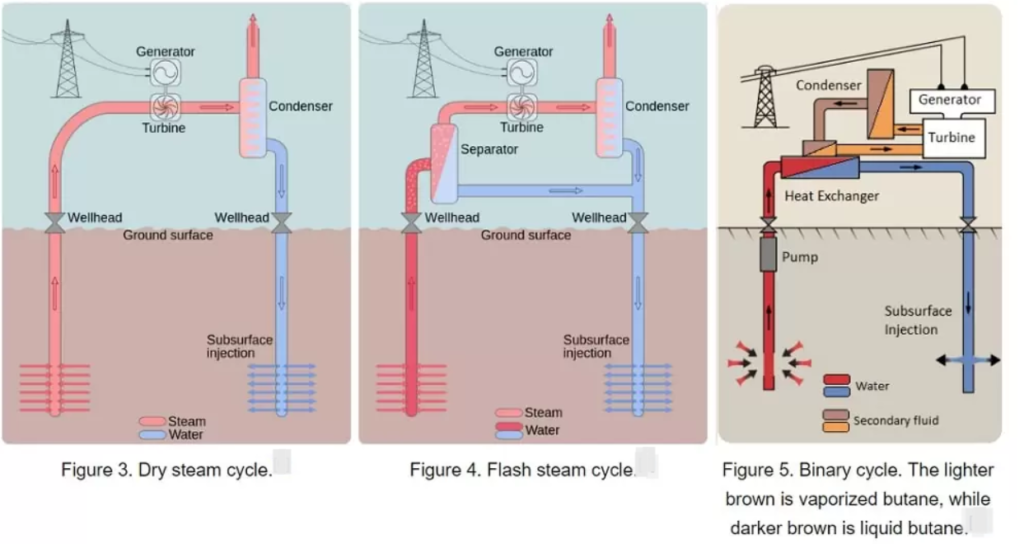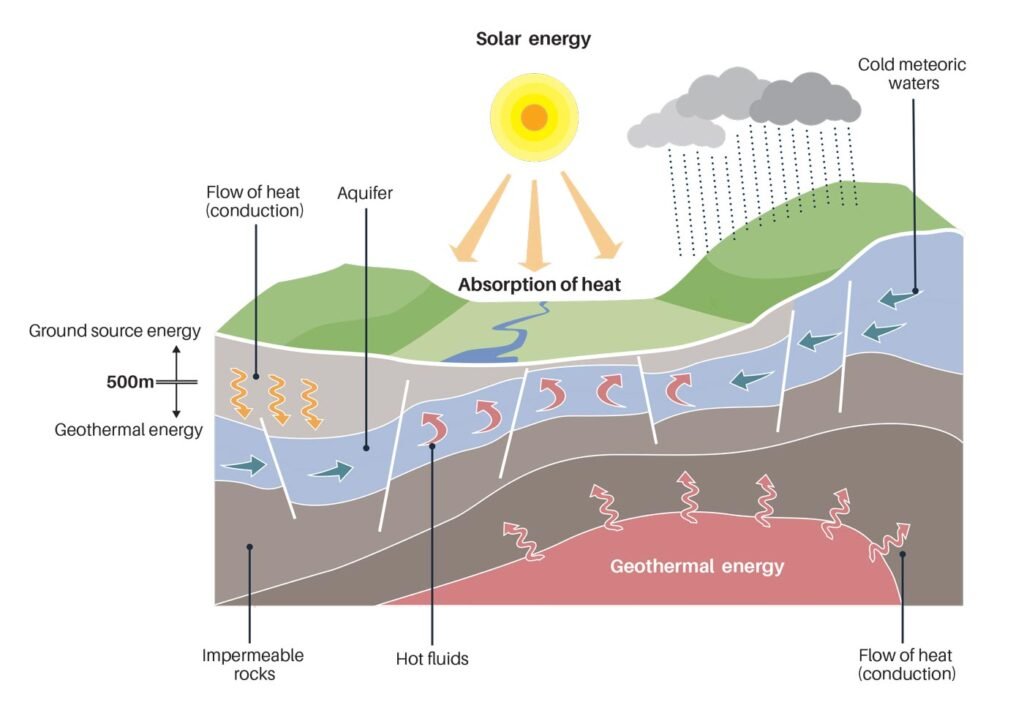
The Energy that comes from the heat of the earth is known as geothermal energy. Humans have found ways to safely harness the earth’s heat energy to produce power. The heat of the earth is harnessed for heating purposes and to generate electricity. Geothermal is an old and reliable clean source of energy and has a huge potential in India. So in today’s article, we will cover the details of geothermal energy in India, how it is produced, and the current status of geothermal power plants in India.

Geothermal Energy in India
The growing demand for energy has led India to move towards cleaner sources of energy such as solar, wind, and geothermal energy. Keeping in mind recent developments in the Solar Energy and Wind energy sector, it is eminent that India is not less concerned about geothermal energy. Geothermal energy is advantageous as it is continuous throughout the day and year, unlike sun and wind energy.
In preceding surveys done by the geological department of India, it is clear that geothermal energy and India would play a bigger role in the following years in order to progress in this field. Geothermal energy is categorized as high and low enthalpy regions and surveys evidently show India is considered to have low enthalpy regions i.e temperatures less than 150°C.

Geothermal Energy Regions in India
Preceding literature surveys in India have discovered 340 geothermal hot springs and they are suitable for direct heat applications. These springs are divided into 7 regions Sahara Valley, Cambay (Khambhat), Himalaya, Son-Narmada-Tapi (Sonata) region, West Coast, Mahanadi basin, and Godavari basin. Surveys also project important reservoirs in J&K, Himachal Pradesh, Maharashtra, and Uttarakhand.
- Among sites in the Himalayas region, surface temperatures reach above 95°C.
- In the Cambay (Khambhat) region temperature varies from 40°C to 90°C.
- The West Coast surface temperatures temperature varies between 46°C to 72°C. While
Son-Narmada-Tapi (Sonata) and Godavari temperatures vary between 60°C to 95°C and 50°C to 60°C respectively. From these numbers, it becomes apparent that India lies in a low enthalpy range but also is blessed with good potential in geothermal energy.

Energy Production from Geothermal Energy
Geothermal Heat is available at 3Km to 80Km below the earth’s surface. Such locations are referred to as Geothermal Fields. Geothermal energy is used for heating purposes as well as in the production of electricity. In 1911 people managed to take advantage of the internal heat of the earth to produce electricity through geothermal plants. Here we are discussing the process of energy production from geothermal energy
- Deep in the earth’s crust, the temperature is very high. The deeper we go the higher is the temperature below.
- For every Kilometer, the temperature rises by 25 degrees Celsius.
- This is the heat that can be extracted from the fluids/ steam through pipes. The hot fluid rises to the surface from pipes and part of it transforms into steam.
- The plant has a separator that receives the mixture of steam and water and its job is to send steam to a dryer where all traces of moisture will be removed.
- The dry steam drives the turbine, this turbine is connected to a generator which spins and generates electricity.
- After that Steam goes into the condenser where it is converted into water. With an injection, pumped water is injected back into the earth through pipes and thus returning the fluid to the reservoir.
Geothermal plants need to send the fluid back to the earth in order to maintain the reservoir pressure, if the fluid is not returned the plant will stop working.

Types of Geothermal Power Plant
There are three types of geothermal power plants where we can harness the heat of the earth to produce electricity.
- Dry steam powerplant
- Flash steam power plant
- Binary cycle power plant
All these plants follow the same principle of using the heat of the earth to produce electricity. As flash steam power plant requires a high enthalpy range and hence they cannot be used in India.

Status of Geothermal Energy/Geothermal Powerplants in India
Keeping in view all potential and future of geothermal energy, major companies have already started planning to invest in geothermal energy:
- Oil and Natural Gas Corporation (ONGC) is establishing, India’s first Geothermal field development project at Puga village in Ladakh. This project is to be completed by the end of 2022.
- Tata Power is India’s largest integrated power company. Tata Power will be setting up a geothermal plant in Gujarat of about 5MW plant.
- Thermax a power equipment company will set up a 3Mw Geothermal Project in Puga valley in Ladakh.
- Panax is an Australian company that has tied up with Geosyndicate to build a 60MW plant in Puga.
- National Thermal Power Corporation is planning to construct a 300MW of geothermal power plant project in Chhattisgarh.
There are small companies that are trying to invest in the development of geothermal projects but due to financial problems have either stopped or changed their route to other renewable sources.
Conclusion
When Compared to other clean energy resources such as Solar and Wind energy, Geo-energy is developing at a very small pace in India. Although geo-energy is advantageous in one way it is continuous throughout the day and year, unlike sun and wind energy. However, India has the potential of generating 10GW by 2030 as they have proposed to harness 10Gw by collaborating with other counties. But in order to achieve the mega goal Government needs a strong focus and investment in Geo-energy projects.
- To visit the official website of the Indian Ministry of Power- Click Here
- To visit the Ministry of New and Renewable Energy- Click Here